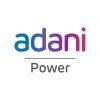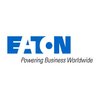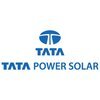Filter interviews by
Adani Solar Interview Questions and Answers
21 Interview questions
Solar cells are primarily made from silicon, but other materials like cadmium telluride and organic compounds are also used.
Silicon: The most common material, used in monocrystalline and polycrystalline solar cells.
Cadmium Telluride (CdTe): A thin-film technology that is cost-effective and efficient.
Copper Indium Gallium Selenide (CIGS): Another thin-film technology known for its flexibility.
Organic Photovoltaics ...
Digital refers to discrete values while analog refers to continuous values.
Digital signals are represented by binary code (0s and 1s) while analog signals are represented by continuous waves.
Digital signals are less susceptible to noise and interference compared to analog signals.
Digital devices are generally more precise and accurate than analog devices.
Examples of digital devices include computers, smartphones, ...
Line balancing is done by analyzing the production process and allocating resources to ensure smooth flow.
Analyze production process to identify bottlenecks
Allocate resources to balance the workload
Ensure smooth flow by monitoring production metrics
Adjust as necessary to maintain optimal line flow
Use tools like time and motion studies to optimize production
Bearing manufacturing process involves several steps including forging, heat treatment, turning, grinding, and assembly.
Raw materials such as steel bars are forged into rough shapes of bearing rings.
The rings are then heat-treated to improve their strength and durability.
After heat treatment, the rings are turned to achieve the desired dimensions and surface finish.
The next step is grinding, which involves precisi...
Alternating current (AC) is an electric current that reverses direction periodically, commonly used in power supply systems.
AC changes direction periodically, unlike direct current (DC) which flows in one direction.
The frequency of AC is measured in Hertz (Hz); for example, in the US, it's typically 60 Hz.
AC is used in household power supplies, such as for lighting and appliances.
Transformers can easily step up or...
Transformers are classified into various types based on their design, function, and application in electrical systems.
Step-up Transformer: Increases voltage, e.g., used in power transmission.
Step-down Transformer: Decreases voltage, e.g., used in power supplies.
Isolation Transformer: Provides electrical isolation, e.g., used in sensitive equipment.
Auto Transformer: Has a single winding, e.g., used in voltage regul...
Step up transformer voltage ko badhata hai, jo ki electrical energy ko efficient tarike se transmit karne mein madad karta hai.
Step up transformer input voltage ko badhata hai, output voltage ko increase karta hai.
Yeh transformers power transmission mein istemal hote hain, jaise ki power plants se grid tak.
Example: Agar input voltage 10V hai aur transformer ka turns ratio 1:3 hai, to output voltage 30V hoga.
Yeh tr...
HIRA stands for Hazard Identification and Risk Assessment.
HIRA is a systematic process of identifying potential hazards and analyzing the associated risks.
It involves identifying the likelihood and severity of harm that could result from each hazard.
The purpose of HIRA is to develop appropriate control measures to mitigate or eliminate the identified risks.
Examples of hazards that may be identified through HIRA in...
NMR stands for Nuclear Magnetic Resonance and FSD stands for Functional Safety Design.
NMR is a technique used in chemistry and physics to study the properties of atomic nuclei.
FSD is a process used in engineering to ensure that a system or product is designed to be safe for its intended use.
NMR can be used to determine the structure of molecules and study chemical reactions.
FSD involves identifying potential hazar...
Risk assessment is the process of identifying, analyzing, and evaluating potential hazards and their associated risks.
Identifying potential hazards
Analyzing the likelihood and severity of harm
Evaluating the level of risk
Implementing measures to control or mitigate risks
Reviewing and updating the risk assessment regularly
Example: Conducting a risk assessment for a construction site to identify potential hazards suc...
Adani Solar Interview Experiences
36 interviews found
I applied via Company Website and was interviewed before Sep 2022. There were 2 interview rounds.

(3 Questions)
- Q1. Basic knowledge of solar cell manufacturing, work experience and case study.
- Q2. Question answer related to work experience
- Q3. Solar manufacturing process and man power management
Interview Preparation Tips
Assistant Manager Interview Questions asked at other Companies
I appeared for an interview before Mar 2024, where I was asked the following questions.
- Q1. Types of motors
- Q2. Which materials are used for making solar cells
- Ans.
Solar cells are primarily made from silicon, but other materials like cadmium telluride and organic compounds are also used.
Silicon: The most common material, used in monocrystalline and polycrystalline solar cells.
Cadmium Telluride (CdTe): A thin-film technology that is cost-effective and efficient.
Copper Indium Gallium Selenide (CIGS): Another thin-film technology known for its flexibility.
Organic Photovoltaics (OPV)...
SAP Operator Interview Questions asked at other Companies
I applied via Naukri.com and was interviewed in Dec 2021. There were 3 interview rounds.
(6 Questions)
- Q1. Tell me in brief about your academics and experience of working till date
- Ans.
I hold a degree in Mechanical Engineering and have over 8 years of experience in production engineering across various industries.
Bachelor's degree in Mechanical Engineering from XYZ University, graduated with honors.
Worked at ABC Manufacturing for 5 years, focusing on process optimization and efficiency improvements.
Led a team project that reduced production downtime by 20% through lean manufacturing techniques.
Curren...
- Q2. Would be be comfortable in switching 5he the industry from automobile to solar
- Ans.
Transitioning from automobile to solar is feasible due to transferable skills and industry growth opportunities.
Both industries require strong engineering principles; skills in design and production can be applied to solar technology.
Experience in project management from the automobile sector can enhance efficiency in solar project execution.
Knowledge of quality control in automobile manufacturing can be utilized to en...
- Q3. What are your current roles and responsibilities
- Q4. How many persons currently are reporting to you
- Q5. What is your current CTC and NP
- Q6. Do you be able to relocate at Mundra location in Gujarat
(6 Questions)
- Q1. Tell me in brief about your current roles and responsibilities
- Q2. Tell me about bearing manufacturing process
- Ans.
Bearing manufacturing process involves several steps including forging, heat treatment, turning, grinding, and assembly.
Raw materials such as steel bars are forged into rough shapes of bearing rings.
The rings are then heat-treated to improve their strength and durability.
After heat treatment, the rings are turned to achieve the desired dimensions and surface finish.
The next step is grinding, which involves precision gr...
- Q3. How you are doing line balancing and maintaining line flow
- Ans.
Line balancing is done by analyzing the production process and allocating resources to ensure smooth flow.
Analyze production process to identify bottlenecks
Allocate resources to balance the workload
Ensure smooth flow by monitoring production metrics
Adjust as necessary to maintain optimal line flow
Use tools like time and motion studies to optimize production
- Q4. What is the value of best OEE that you have achieved so far
- Q5. Share your improvements and project details that you have done so far in your current organization
- Q6. Please elaborate about the things that you know about 6 sigma
(4 Questions)
- Q1. Would you be comfortable in relocating
- Q2. Are you physically fit
- Q3. What is your expected hike
- Q4. When you will be able to join us?
Interview Preparation Tips
- Basics of solar
Senior Production Engineer Interview Questions asked at other Companies
I applied via Naukri.com

(2 Questions)
- Q1. About your self and experience
- Q2. About lc process and how current profile matching with JD
(1 Question)
- Q1. About. Relocation and negotiatation
Interview Preparation Tips
Assistant Manager F Interview Questions asked at other Companies
I applied via Naukri.com and was interviewed in Feb 2022. There were 5 interview rounds.

(1 Question)
- Q1. Something about yourself & about your previous company, your job responsibilities and other things
(1 Question)
- Q1. 5S, Manpower Handling, Shop floor management, OEE improvement, Kaizens, Poke Yoke, Safety, Projects leading etc...
(8 Questions)
- Q1. What are your salary expectations?
- Q2. What is your family background?
- Q3. Share details of your previous job.
- Q4. Why should we hire you?
- Q5. Why are you looking for a change?
- Q6. Where do you see yourself in 5 years?
- Q7. What are your strengths and weaknesses?
- Q8. Tell me about yourself.
(1 Question)
- Q1. Interview with plant head..
Interview Preparation Tips
- OEE Calculation
- 5S System
- Kaizen Implementation
- Poke yoke
- Manpower Handling
- Shop Floor Management
- Quality Control
- Auditing
- Safety Management
Senior Production Engineer Interview Questions asked at other Companies
I applied via Naukri.com and was interviewed in Apr 2022. There were 3 interview rounds.

(2 Questions)
- Q1. What is mean by HIRA
- Ans.
HIRA stands for Hazard Identification and Risk Assessment.
HIRA is a systematic process of identifying potential hazards and analyzing the associated risks.
It involves identifying the likelihood and severity of harm that could result from each hazard.
The purpose of HIRA is to develop appropriate control measures to mitigate or eliminate the identified risks.
Examples of hazards that may be identified through HIRA include...
- Q2. Define risk assessment
- Ans.
Risk assessment is the process of identifying, analyzing, and evaluating potential hazards and their associated risks.
Identifying potential hazards
Analyzing the likelihood and severity of harm
Evaluating the level of risk
Implementing measures to control or mitigate risks
Reviewing and updating the risk assessment regularly
Example: Conducting a risk assessment for a construction site to identify potential hazards such as ...
(1 Question)
- Q1. What is mean by NMR and FSD
- Ans.
NMR stands for Nuclear Magnetic Resonance and FSD stands for Functional Safety Design.
NMR is a technique used in chemistry and physics to study the properties of atomic nuclei.
FSD is a process used in engineering to ensure that a system or product is designed to be safe for its intended use.
NMR can be used to determine the structure of molecules and study chemical reactions.
FSD involves identifying potential hazards, a...
Interview Preparation Tips
Safety Officer Interview Questions asked at other Companies
I applied via Recruitment Consulltant and was interviewed in Dec 2021. There was 1 interview round.
(6 Questions)
- Q1. Alternating current kise kahate Hain
- Ans.
Alternating current (AC) is an electric current that reverses direction periodically, commonly used in power supply systems.
AC changes direction periodically, unlike direct current (DC) which flows in one direction.
The frequency of AC is measured in Hertz (Hz); for example, in the US, it's typically 60 Hz.
AC is used in household power supplies, such as for lighting and appliances.
Transformers can easily step up or step...
- Q2. I think ke liye kaun sa wire prayog liya jata hai
- Q3. Om ka niyam kise kahate Hain
- Ans. Om ka niyam ke anusar yadi kisi chalak padarth ki bhautik avastha Jaise tapdav aadi niyat rahe to chalak tar se pravahit hone wale dwara uske siron per aaropit vibhavantar ke samanupati Hoti hai Jaise voltage proportional current
- Q4. Transformer mein कौन-कौन se loss hote Hain
- Ans.
Transformers experience various losses, primarily copper and iron losses, affecting efficiency and performance.
Copper Losses: Caused by resistance in the windings; increases with load. Example: I²R losses.
Iron Losses: Also known as core losses, consist of hysteresis and eddy current losses. Example: Hysteresis loss due to magnetic properties.
Stray Losses: Occur due to leakage flux in the transformer; generally small bu...
- Q5. Transformer kitne prakar ka hota hai
- Ans.
Transformers are classified into various types based on their design, function, and application in electrical systems.
Step-up Transformer: Increases voltage, e.g., used in power transmission.
Step-down Transformer: Decreases voltage, e.g., used in power supplies.
Isolation Transformer: Provides electrical isolation, e.g., used in sensitive equipment.
Auto Transformer: Has a single winding, e.g., used in voltage regulation...
- Q6. Step up transformer ka karya kya hota hai
- Ans.
Step up transformer voltage ko badhata hai, jo ki electrical energy ko efficient tarike se transmit karne mein madad karta hai.
Step up transformer input voltage ko badhata hai, output voltage ko increase karta hai.
Yeh transformers power transmission mein istemal hote hain, jaise ki power plants se grid tak.
Example: Agar input voltage 10V hai aur transformer ka turns ratio 1:3 hai, to output voltage 30V hoga.
Yeh transfo...
Interview Preparation Tips
- Technician Activities
Electrical Technician Interview Questions asked at other Companies
I appeared for an interview before May 2023.
(2 Questions)
- Q1. Current process
- Q2. Tell me about yourself
Interview Preparation Tips
Assistant Manager Interview Questions asked at other Companies
I applied via Approached by Company and was interviewed in Dec 2021. There was 1 interview round.
(3 Questions)
- Q1. Last project in your college
- Q2. What is diode and how to check it's ok or not on
- Ans.
A diode is an electronic component that allows current to flow in only one direction. To check if it's ok, use a multimeter in diode mode.
A diode has two terminals: an anode and a cathode
When forward-biased, a diode allows current to flow through it
When reverse-biased, a diode blocks current flow
To check if a diode is ok, use a multimeter in diode mode and measure the voltage drop across the diode
A good diode will have...
- Q3. Different between digital and analog
- Ans.
Digital refers to discrete values while analog refers to continuous values.
Digital signals are represented by binary code (0s and 1s) while analog signals are represented by continuous waves.
Digital signals are less susceptible to noise and interference compared to analog signals.
Digital devices are generally more precise and accurate than analog devices.
Examples of digital devices include computers, smartphones, and d...
Interview Preparation Tips
- Behaviour and communication skil
Maintenance Engineer Interview Questions asked at other Companies
I appeared for an interview in Dec 2021.

(1 Question)
- Q1. Department Head Basic quality assurance Six sigma
(1 Question)
- Q1. Introduction and overview of job profile
(1 Question)
- Q1. Salary and introduction
Interview Preparation Tips
- Quality Assurance
- Cell Culture
- Solar cell Bassi
- Six Sigma
Top trending discussions






Adani Solar Interview FAQs
Tell us how to improve this page.
Adani Solar Interviews By Designations
- Adani Solar Senior Engineer Interview Questions
- Adani Solar Engineer Interview Questions
- Adani Solar Assistant Manager Interview Questions
- Adani Solar Electrical Engineer Interview Questions
- Adani Solar Maintenance Engineer Interview Questions
- Adani Solar Senior Production Engineer Interview Questions
- Adani Solar Deputy Manager Interview Questions
- Adani Solar Manager Interview Questions
- Show more
Interview Questions for Popular Designations
- Senior Engineer Interview Questions
- Executive Interview Questions
- Sales Executive Interview Questions
- Associate Software Engineer Interview Questions
- Graduate Engineer Trainee (Get) Interview Questions
- Java Developer Interview Questions
- Data Analyst Interview Questions
- System Engineer Interview Questions
- Show more
Overall Interview Experience Rating
based on 11 interview experiences
Difficulty level
Duration
Interview Questions from Similar Companies
Adani Solar Reviews and Ratings
based on 270 reviews
Rating in categories
|
Deputy Associate
61
salaries
| ₹1.7 L/yr - ₹2.9 L/yr |
|
Assistant Manager
60
salaries
| ₹5 L/yr - ₹12.2 L/yr |
|
Senior Engineer
42
salaries
| ₹4.4 L/yr - ₹7.8 L/yr |
|
Deputy Manager
35
salaries
| ₹9.5 L/yr - ₹18 L/yr |
|
Diploma Trainee Engineer
28
salaries
| ₹1.8 L/yr - ₹2.3 L/yr |

Suzlon Group

Adani Power

Adani Group

Torrent Power
- Home >
- Interviews >
- Adani Solar Interview Questions













